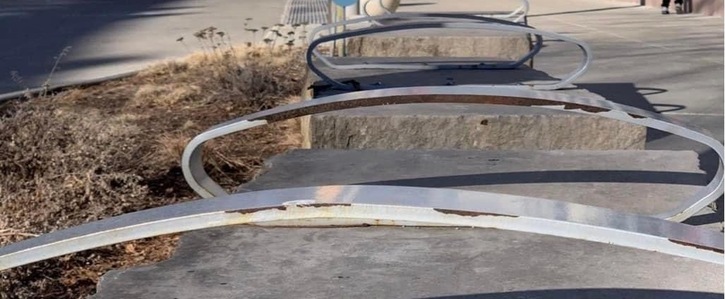1,000 signatures reached
To: City of Lincoln, NE City Council/Mayor’s Office
Remove the Hostile Architecture from Lincoln, NE

The bars on benches in downtown Lincoln, bus stops and obstacles underneath bridges in Antelope Creek and other circumstances across the city create an unwelcoming environment. Our city should be freed of these obstacles and further city planning efforts need to avoid making spaces that ostracize any citizens and/or those experiencing homelessness.
Hostile architecture is not only irrational, but also morally repugnant and detrimental to all of society. Hostile architecture doesn't solve homelessness—far from it. Instead of solving the socio-economic roots of the problem, it just moves homeless people out of sight
Hostile architecture is not only irrational, but also morally repugnant and detrimental to all of society. Hostile architecture doesn't solve homelessness—far from it. Instead of solving the socio-economic roots of the problem, it just moves homeless people out of sight
Why is this important?
By its nature, urban design will reflect a community’s values. And a city that prioritizes cars will grow to lookquite different from one that values walkability.
In the same way, a city’s design can go further still—to express the compassion of its people. “The true measure of any society,” Gandhi said, “can be found in how it treats its most vulnerable members.” And by this measure, Lincoln’s design today falls well short of Lincoln’s compassion.
The benches we’ve placed downtown use bars to discourage loitering. They’re an example of what’s known as “hostile architecture.” They send a message to Lincoln’s homeless and most vulnerable: You are not welcome to rest here. It is a brand of civic unkindness that is considered, designed and executed with the explicit motive to exclude and harass. In disinviting the poor and the weary, hostile architecture invites shame.
In major cities across the country, people are coming forward to reject such designs. They’re demanding urban spaces that reflect openness, compassion and inclusivity.
It’s important to note that dismantling hostile architecture doesn’t seek to, as some critics claim, encourage panhandling or increase homelessness. On the contrary, it is about creating public spaces that are hospitable to civility and interaction. It is about supporting the vital work of homeless service providers in their outreach to people and families. (Their work, by the way, can be far more successful absent the obstacles of hostile architecture.)
Lincoln is a wonderful city, and a welcoming one. Lincolnites deserve a downtown that is as welcoming as its people. It’s time to remove the bars on Lincoln’s downtown benches. Rather than attempt to hide our poverty, let’s embrace a downtown that highlights the richness of our values.
In the same way, a city’s design can go further still—to express the compassion of its people. “The true measure of any society,” Gandhi said, “can be found in how it treats its most vulnerable members.” And by this measure, Lincoln’s design today falls well short of Lincoln’s compassion.
The benches we’ve placed downtown use bars to discourage loitering. They’re an example of what’s known as “hostile architecture.” They send a message to Lincoln’s homeless and most vulnerable: You are not welcome to rest here. It is a brand of civic unkindness that is considered, designed and executed with the explicit motive to exclude and harass. In disinviting the poor and the weary, hostile architecture invites shame.
In major cities across the country, people are coming forward to reject such designs. They’re demanding urban spaces that reflect openness, compassion and inclusivity.
It’s important to note that dismantling hostile architecture doesn’t seek to, as some critics claim, encourage panhandling or increase homelessness. On the contrary, it is about creating public spaces that are hospitable to civility and interaction. It is about supporting the vital work of homeless service providers in their outreach to people and families. (Their work, by the way, can be far more successful absent the obstacles of hostile architecture.)
Lincoln is a wonderful city, and a welcoming one. Lincolnites deserve a downtown that is as welcoming as its people. It’s time to remove the bars on Lincoln’s downtown benches. Rather than attempt to hide our poverty, let’s embrace a downtown that highlights the richness of our values.
